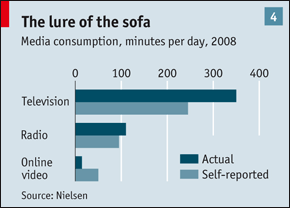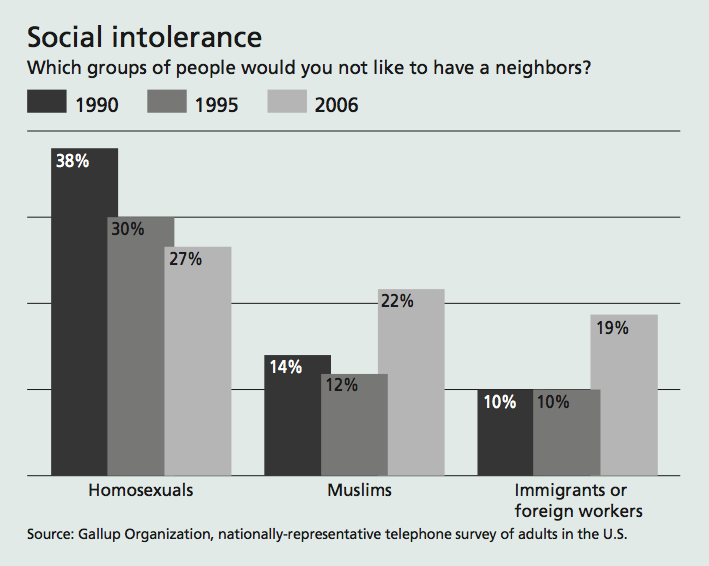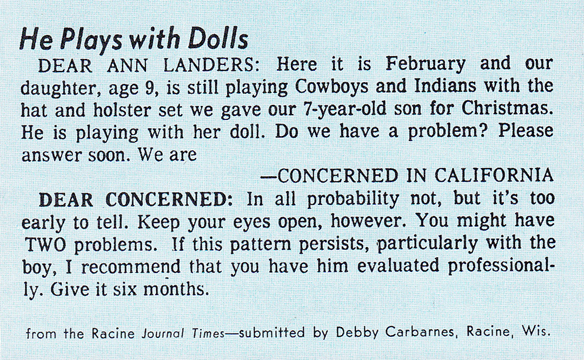An article at The Economist summarizes the research of Sarah Pearson, who has spent almost 100,000 hours watching British people watch television. People underestimate how much time they spend watching television and listening to the radio (especially the first one), but they overestimate how much time they spend watching online videos.
Pearson found that they also underestimate how much time they spend watching shows as they are being broadcasted. Despite the many ways that shows can now be recorded and rebroadcast, most of our television watching is just like it was 50 years ago. “Even in British homes with a Sky+ box,” she finds, “…almost 85% of television shows are viewed at the time the broadcasters see fit to air them.”
Why? Because television is a social activity. People sit down to watch things together and then they “see what’s on.” And, even when people watch television alone, they like to watch shows at the same time as other people are watching it, or as soon as possible afterward.
Via BoingBoing.
Lisa Wade, PhD is an Associate Professor at Tulane University. She is the author of American Hookup, a book about college sexual culture; a textbook about gender; and a forthcoming introductory text: Terrible Magnificent Sociology. You can follow her on Twitter and Instagram.









